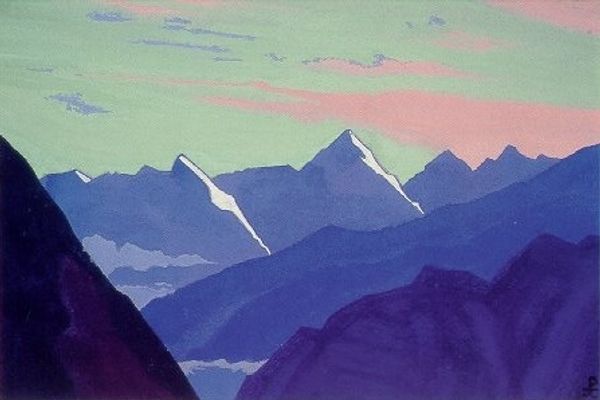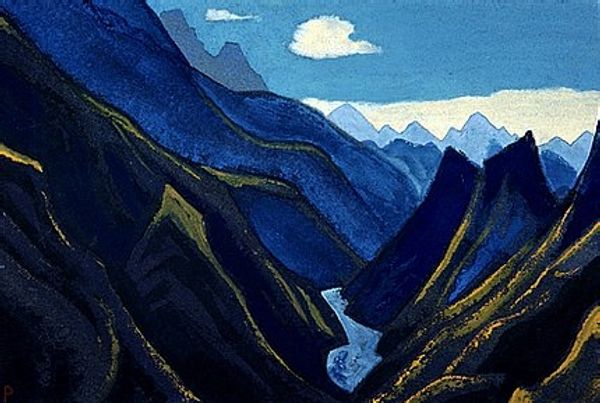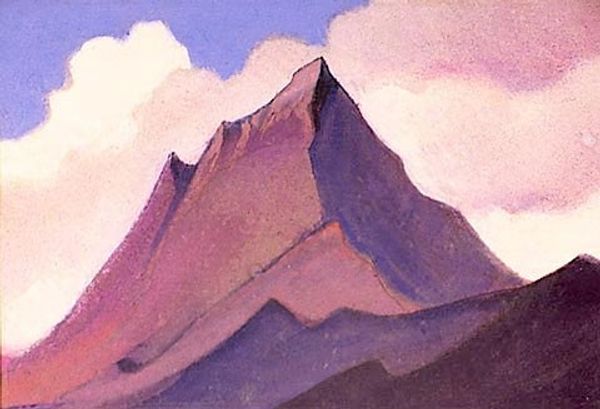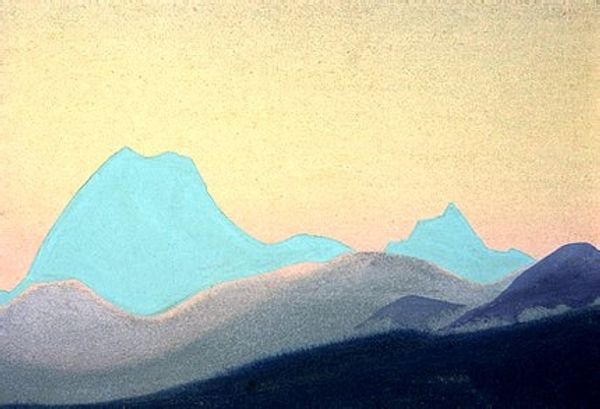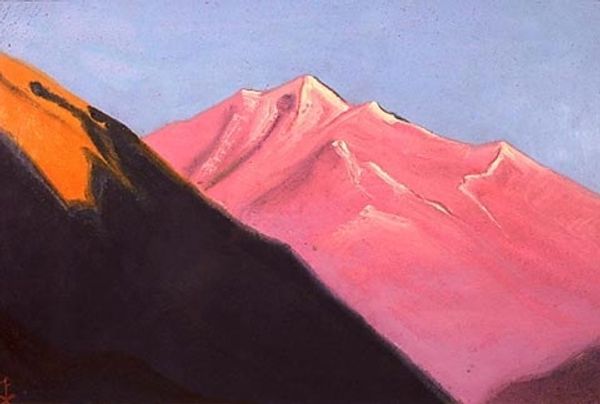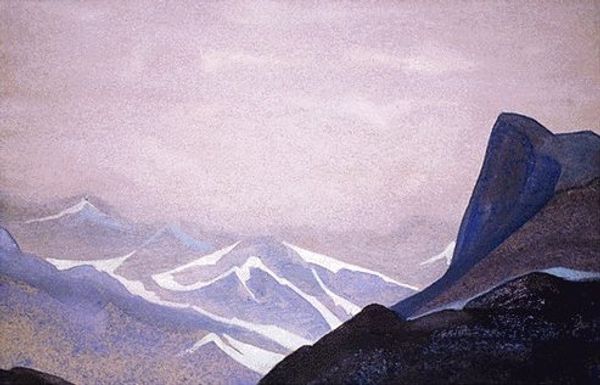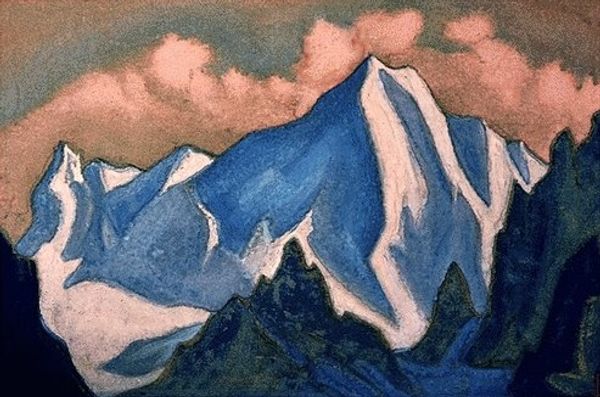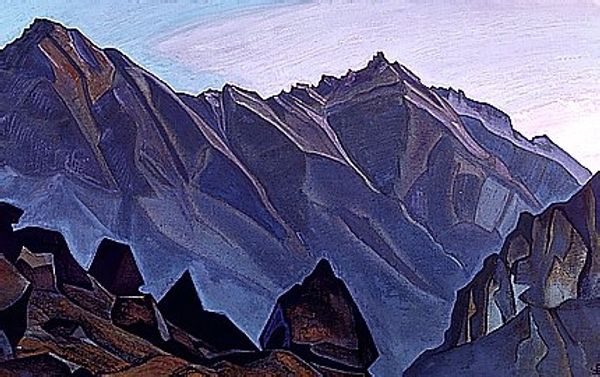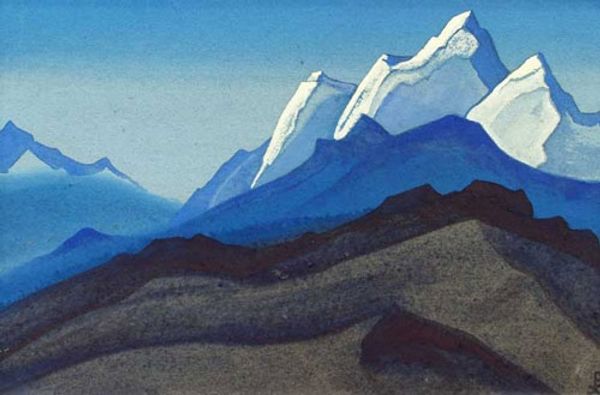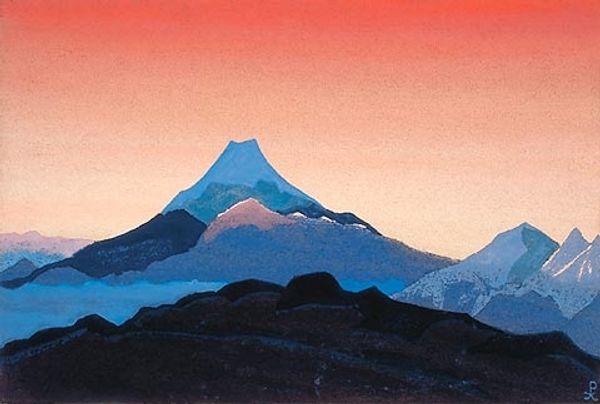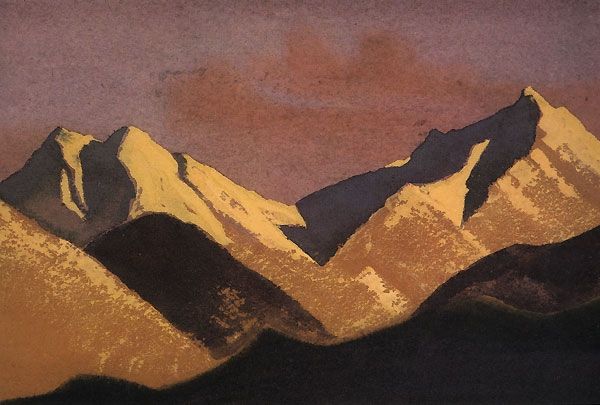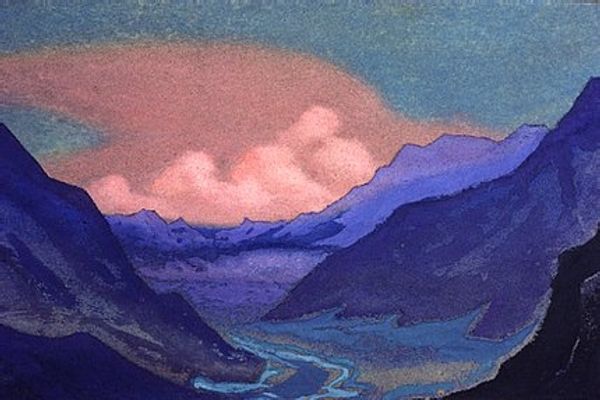
Copyright: Public domain
Editor: This oil painting, "Himalayas" by Nicholas Roerich, completed in 1945, gives off a really tranquil feeling, even with those jagged peaks. The use of cool blues and purples creates a sense of immense scale and distance. What can you tell me about it? Curator: Looking at "Himalayas" through a materialist lens invites us to consider the paint itself, how Roerich's application techniques, those layering effects, contributed to its reception, and how that process relates to the very concept of landscape painting as a commodified genre. How does the medium affect our interpretation? Editor: I hadn't really thought about that, to be honest. The layers create depth. Do you think the materiality affects its value as 'high' art? Curator: Precisely. The repetitive, almost rhythmic application of pigment in shades of blue flattens pictorial space; that calls into question the notion of landscape painting as simply an imitation of nature. Further, the artwork's transport and the materials acquisition needed to produce these Himalayan scapes become considerations. Does romanticism inherently create a remove between labor and artwork, when those sublime emotions seem far-removed from resource expenditure? Editor: That's a lot to think about. Now, looking at it again, I can see those repetitive strokes and how the availability of oil paints themselves played a huge part. Thanks, I have new ideas about the art and context of paintings now! Curator: Excellent. By examining the materials, we unravel the intertwined relationships of artistic creation, environmental impact, and consumption that resonate throughout art history.
Comments
No comments
Be the first to comment and join the conversation on the ultimate creative platform.
